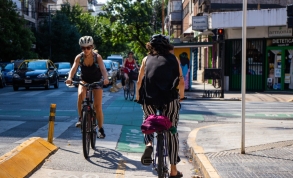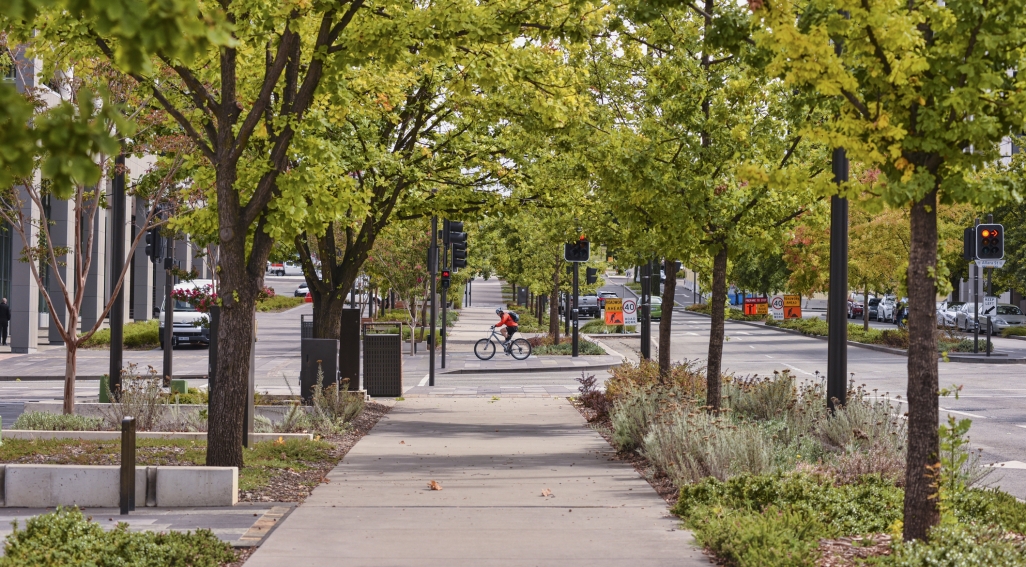Related Content

Physical activity
More Bikes, Less Emissions

Air quality
Urban forests in California

Water quality
Ahead of World Cities Day, the Pathfinder Initiative highlights how cities can drive the net-zero transition and bring benefits to the health and wellbeing of urban dwellers worldwide.

Awareness about the key role of cities in tackling the climate crisis, creating healthier urban environments, and securing a more sustainable future is growing. Cities are on the frontline of climate breakdown, already experiencing extreme weather, heatwaves, threat from infectious diseases, and food and water insecurity. Without urgent adaptation measures to build resilience against climate shocks, people living in cities will suffer increasingly severe impacts to their health and livelihoods. At the same time, cities which will be home to almost 70% of the global population by 2050 according to recent estimates, have a major opportunity to drive action to accelerate the net-zero transition and improve the health and wellbeing of people living in urban areas worldwide.
Local governments are also increasingly recognised as leading the way with innovative climate action and policies, particularly in sectors like transportation, waste management, buildings and construction.
The UN has designated October as a moment to promote a better urban future, culminating in World Cities Day on 31 October. Cities will also be an important focus of COP29 in Baku, with urbanisation included among key themes, and an initiative on Multisectoral Action Pathways for Resilient and Healthy Cities due to be launched at the conference. Beyond COP, the focus on cities is expected to continue including with the next IPCC special report on climate change and cities. As momentum around city-level climate action grows, a health-centred, multisectoral approach should be at the forefront of discussions, policymaking and implementation.
Here are five ways that cities can lead this effort:
From planning to implementation and evaluation, health must be at the heart of urban development and climate action. Health-promoting decarbonisation actions should be prioritised in a range of sectors including energy, transport, buildings, industry, food, and healthcare. Evidence from the Lancet Pathfinder Commission report shows that there are opportunities for win-win actions for climate and health across all sectors.
As cities face compounding pressures including rapidly increasing population, growing inequalities, over-stretched infrastructure, increased disease risk, and poverty, highlighting the importance of health co-benefits can increase support for ambitious climate action in the context of competing priorities.
The Pathfinder Initiative’s review of evidence highlighted three main pathways to health from climate mitigation: cleaner air from fossil fuel phase out and a transition to renewables; shifting to healthier, more sustainable diets; and increased physical activity through promoting active travel. Cities are a focal point for action to achieve these health co-benefits, which can be realised in the near-term.
Though cities currently contribute to around 70% of global greenhouse gas (GHG) emissions, many are driving the energy transition, with over 40 cities already operating on 100% renewable electricity and 100 more generating at least 70% of electricity from renewables. Cities are also taking action to promote active travel. For example, Buenos Aires introduced the "Más Bicis, Menos Emisiones" programme, a network of cycle lanes and bicycle sharing scheme, that resulted in a 131% increase in cycle trips between 2013 and 2020, a reduction of over 12,000 tons of CO2 emissions in 2020, and safer roads for cyclists.
To achieve low-carbon climate-resilient development, cities need to integrate clean energy, energy efficient housing, improved water and sanitation, accessible public transport and infrastructure for active travel, and adequate greenspace. This will require systems thinking to identify synergies between and within sectors, and minimise trade-offs and unintended consequences.
For example, the Pathfinder Commission report highlights that in the transport sector, a range of actions to increase public transport use and active travel while reducing private car use, are needed to reduce emissions and improve health. Single interventions have limited effects. Electric cars reduce GHG emissions and air pollution, but do not bring health benefits from physical activity, while improved cycle infrastructure alone would not bring sufficient emissions reductions.
In addition to integrating actions across and within sectors, climate mitigation and adaptation actions should be integrated to maximise health co-benefits. This is especially important for cities in low- and middle-income countries which are often most impacted and will also experience the largest urban growth rates in the coming decades.
Nature-based solutions are an example of how cities can build resilience and mitigate climate change, while improving human health. For example, urban trees provide mitigation benefits through carbon storage and sequestration, which can improve health and air quality. Urban trees in California are estimated to store 103 megatonnes of CO2 per year. The total mitigation impact is equivalent to removing 14% of all cars from Californian roads. Air quality improvements were valued at $56.2 million, although the true value may be even higher when factoring in avoided mortality and healthcare costs of respiratory diseases.
Further studies have shown the potential for urban trees to reduce mortality linked to urban heat islands and provide adaptation benefits. Benefits depend, however, on the type of trees planted as some can increase allergies or produce volatile organic compounds that are precursors of tropospheric ozone, a short-lived climate pollutant that is harmful to human health.
Health is both a driver to incentivise urban action on climate and an indicator of impact. To understand what works for climate and health and capitalise on co-benefits, cities need to develop monitoring and evaluation systems using standardised metrics and guidelines to measure effects on GHG emissions and health.
The Pathfinder Commission report highlighted the need for more evidence on the climate and health impacts of implemented solutions. Tools exist to help cities quantify the benefits of interventions. The Healthy and Efficient Retrofitted Buildings (HERB) tool allows cities to estimate environmental, socio-economic and health benefits of building retrofits. In Copenhagen and New York, school retrofits improved student learning, teacher productivity and local employment potential; in Tshwane and Amsterdam retrofitting municipal buildings reduced staff absenteeism, energy costs and emissions. This and other tools available to evaluate climate and health effects need to be taken up at scale to measure and deliver impact globally.
Providing guidance for monitoring and evaluation will be a focus of the Pathfinder Initiative’s second phase. Partners including the London School of Hygiene & Tropical Medicine, C40 cities, the Sustainable Development Solutions Network (SDSN), CDP and the Organisation for Economic Co-operation and Development (OECD), will work together to support cities with evaluating the impact of implemented actions on climate and health, identify barriers and enablers of action, and generate new case studies that will be showcased on the Climate & Health Evidence Bank.
Improved understanding of the impact of implemented actions will allow urban decision makers to learn lessons and share knowledge about successes and failures to inform more effective health-centred climate action in cities around the world. Involving young people in urban decision making and action on climate, and greater awareness of the health benefits of decarbonisation for children and youth are also vital.
Evidence suggests a gap between the potential and actual role of health co-benefits in policymaking, highlighting the importance of strengthening research capacity on climate and health and gathering more robust data to embed co-benefits in urban decision making.
Many of the case studies gathered in the Pathfinder Initiative’s first phase highlight city-level action, including initiatives to promote active travel in cities in New Zealand; a vehicle emissions reduction programme in Tokyo; the Clean Heat Program in New York; and improved water quality in Surat. However, more evaluated examples and scale up are urgently needed to spur transformative change.
The next phase of the Pathfinder Initiative aims to address this gap, bringing together cities, researchers, funders and organisations to facilitate collaboration, identify solutions, and evaluate impact to create healthier, more sustainable cities of the future.